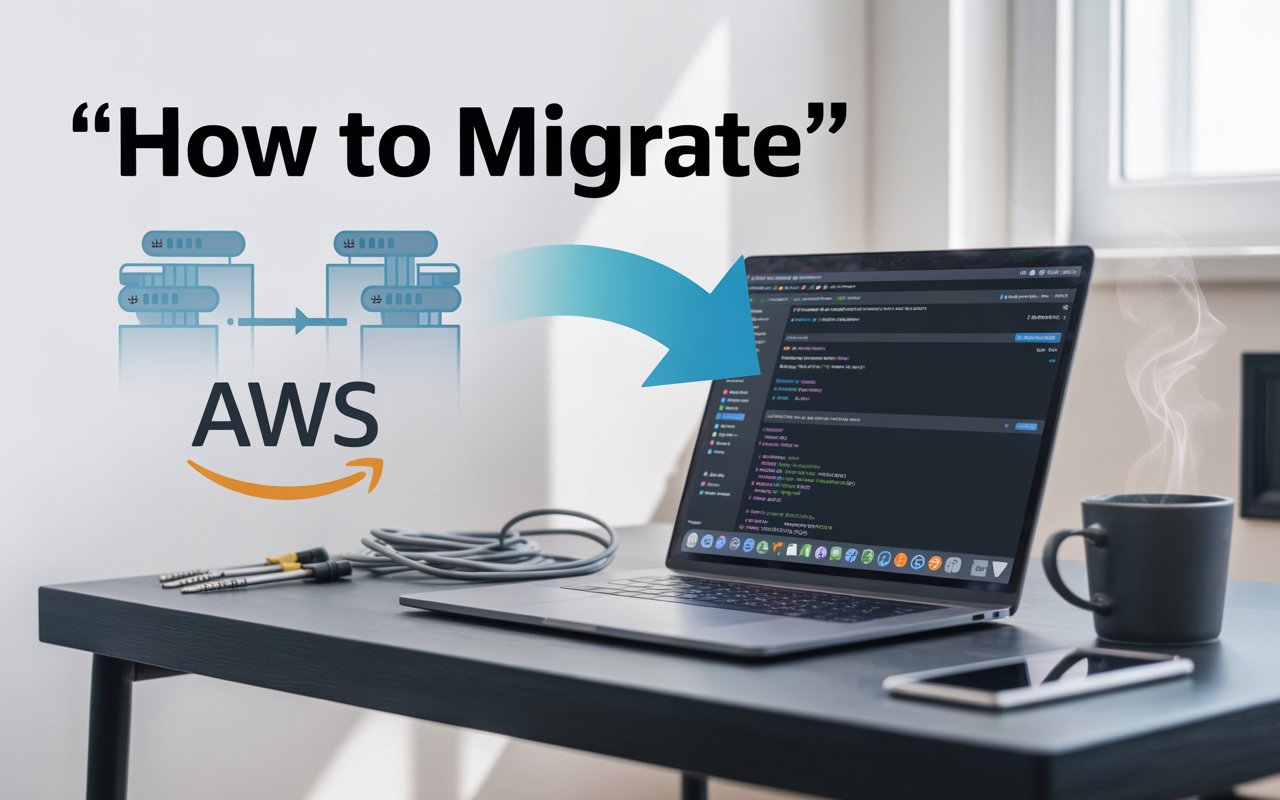How to Migrate WordPress Site to AWS: A Comprehensive Guide
Migrating a WordPress site to Amazon Web Services (AWS) can significantly improve performance, scalability, and security. Whether you’re a developer, business owner, or IT professional, understanding how to migrate WordPress site to AWS is a valuable skill in today’s cloud-driven world. This guide provides a step-by-step approach, industry insights, and career opportunities related to AWS and WordPress migrations.
Why Migrate WordPress to AWS?
Before diving into how to migrate WordPress site to AWS, it’s essential to understand the benefits:
- Scalability: AWS allows automatic scaling to handle traffic spikes.
- Performance: Leveraging AWS’s global infrastructure reduces latency.
- Security: AWS offers robust security features like firewalls and DDoS protection.
- Cost Efficiency: Pay-as-you-go pricing reduces unnecessary expenses.
Many businesses choose AWS for WordPress hosting due to its reliability and flexibility.
Why Host WordPress on AWS?
Before diving into how to transfer a WordPress site to AWS, it’s important to understand why AWS is a top choice for WordPress hosting:
- High Performance: AWS’s global server network ensures fast load times.
- Elastic Scalability: Easily handle traffic surges without downtime.
- Enhanced Security: Built-in firewalls, encryption, and DDoS protection.
- Cost-Effective: Pay only for the resources you use.
Businesses of all sizes are shifting to AWS for better uptime and flexibility.
Pre-Migration Preparation
To ensure a smooth transition when moving a WordPress site to AWS, follow these steps:
1. Back Up Your Website
- Use plugins like All-in-One WP Migration or manually export your database.
- Store backups on AWS S3 for quick retrieval.
2. Select the Right AWS Services
- EC2 (Elastic Compute Cloud): Hosts your WordPress instance.
- RDS (Relational Database Service): Manages MySQL databases efficiently.
- S3 (Simple Storage Service): Stores media files and backups.
- CloudFront: Accelerates content delivery via a CDN.
Pre-Migration Checklist
Before learning how to migrate WordPress site to AWS, ensure you complete these steps:
1. Backup Your WordPress Site
- Use plugins like UpdraftPlus or manually export your database.
- Store backups securely in an AWS S3 bucket for easy access.
2. Choose the Right AWS Services
- Amazon EC2: For hosting WordPress on a virtual server.
- Amazon RDS: For managed MySQL database hosting.
- Amazon S3: For storing media files and backups.
- Amazon CloudFront: For CDN acceleration.
3. Estimate Costs
- Use the AWS Pricing Calculator to avoid unexpected charges.
Step-by-Step Guide: How to Migrate WordPress Site to AWS
Now, let’s explore how to migrate WordPress site to AWS in detail.
Step 1: Set Up an AWS Account
- Sign up for an AWS account.
- Enable billing alerts to monitor costs.
Step 2: Launch an EC2 Instance
- Navigate to the EC2 dashboard.
- Click “Launch Instance” and select an Amazon Machine Image (AMI) with WordPress pre-installed (e.g., Bitnami WordPress).
- Choose an instance type (t3.micro for testing, larger for production).
- Configure security groups to allow HTTP/HTTPS traffic.
Step 3: Connect to Your EC2 Instance
- Use SSH (for Linux) or RDP (for Windows) to access the server.
- Install necessary software (e.g., LAMP stack if using a clean OS).
Step 4: Migrate WordPress Files
- Use SFTP (e.g., FileZilla) to upload your WordPress files to
/var/www/html. - Alternatively, use AWS CLI to sync files from an existing server to S3, then to EC2.
Step 5: Migrate the WordPress Database
- Export your existing database using phpMyAdmin or WP-CLI.
- Create a new MySQL database on Amazon RDS or your EC2 instance.
- Import the SQL dump file into the new database.
Step 6: Update WordPress Configuration
- Modify
wp-config.phpwith the new database credentials. - Update site URLs if the domain changes (use
WP_HOMEandWP_SITEURL).
Step 7: Test the Migration
- Temporarily point your domain to the AWS server using the
/etc/hostsfile. - Verify all pages, plugins, and media files load correctly.
Step 8: Route Traffic to AWS
- Update DNS records (A or CNAME) to point to your EC2 instance’s public IP or Elastic Load Balancer.
- Enable HTTPS using AWS Certificate Manager (ACM) and CloudFront.
Post-Migration Best Practices
After successfully learning how to migrate WordPress site to AWS, follow these steps:
1. Enable Automated Backups
- Use Amazon RDS snapshots and EBS backups.
2. Monitor Performance
- Use Amazon CloudWatch to track server health.
3. Optimize for SEO
- Update sitemaps and notify search engines of the new IP.
Industry Insights: The Growing Demand for AWS WordPress Experts
As more businesses move to the cloud, professionals skilled in how to migrate WordPress site to AWS are in high demand. Key trends include:
- Hybrid Cloud Solutions: Companies use AWS alongside on-premise servers.
- Serverless WordPress: AWS Lambda for dynamic scaling.
- AI Integration: AWS AI tools for personalized WordPress experiences.
Career Opportunities in AWS and WordPress
Learning how to migrate WordPress site to AWS opens doors to roles like:
- Cloud Solutions Architect – Designs scalable AWS infrastructures.
- DevOps Engineer – Automates deployment and monitoring.
- WordPress Developer – Specializes in AWS-optimized WordPress sites.
Certifications like AWS Certified Solutions Architect or AWS Certified Developer can boost your career.
Conclusion
Understanding how to migrate WordPress site to AWS is crucial for modern web professionals. By following this guide, you can ensure a smooth transition while leveraging AWS’s powerful features. Whether you’re optimizing for performance, security, or scalability, AWS provides the tools needed for a robust WordPress hosting environment.
Start your migration today and explore the career opportunities in this growing field!
